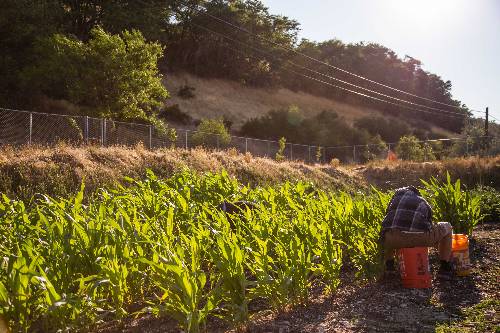The Advantages of Regenerative Agriculture for Soil Health And Wellness
The Advantages of Regenerative Agriculture for Soil Health And Wellness
Blog Article
Optimize Plant Growth and Return With Premium Water Soluble Polymers for Farming
Premium water-soluble polymers have actually arised as a promising tool in this search, providing a range of benefits that can change the method we come close to crop farming. By resolving critical facets such as soil structure, water retention, and nutrient delivery, these polymers have the possible to unlock new levels of performance and return in agricultural production.
Advantages of Water-Soluble Polymers
Water-soluble polymers offer a variety of advantages in farming applications, improving soil structure and water retention effectiveness. These polymers, when related to the dirt, can considerably enhance soil aggregation, reducing disintegration and raising overall dirt wellness. By enhancing dirt framework, water-soluble polymers produce a more positive environment for origin growth and advancement, eventually causing improved plant returns.

Better Soil Structure
Offered the demonstrated benefits of water-soluble polymers in boosting soil high quality and water retention, a crucial element that stands out is the substantial influence these polymers have on reorganizing the dirt composition. Premium water-soluble polymers play a vital duty in improving dirt framework by promoting dirt aggregation and security. By enhancing dirt structure, water-soluble polymers help avoid soil compaction, which can limit origin development and water motion.
Improved Water Retention
Improved water retention can be achieved through the usage of costs water-soluble polymers in agricultural practices. These polymers have the unique capacity to take in and preserve big quantities of water within the soil account, producing a tank that plants can access during periods of water stress and anxiety.
Premium water-soluble polymers work by forming a gel-like framework when mixed with water, increasing the dirt's water-holding capacity and minimizing water loss with dissipation and drainage. This enhanced water retention not only enhances plant resilience to drought conditions but also lowers the frequency of watering, resulting in water conservation and expense savings for farmers.
Efficient Nutrient Delivery
With the foundation of enhanced water retention now developed, the emphasis shifts in the direction of enhancing agricultural techniques through the reliable shipment of nutrients to plants for sustained development and efficiency (Agriculture). Efficient nutrient shipment is critical in optimizing plant yields and making sure plant health and wellness. Water-soluble polymers play a vital duty in this process by promoting the regulated launch of essential nutrients to the plants' root systems
One trick advantage of making use of premium water-soluble polymers for efficient nutrient shipment is their capability to bind with nutrients, such as phosphorus, potassium, and nitrogen, stopping leaching and runoff. This ensures that the plants get a stable and consistent supply of nutrients, minimizing wastage and ecological impact.
In addition, these polymers can enhance nutrient uptake performance by advertising root advancement and boosting soil structure (Agriculture). By developing a desirable environment for origin growth, water-soluble polymers assist plants gain access to nutrients better, resulting this contact form in much healthier plants with enhanced resistance to stress factors like dry spell or condition
Maximizing Plant Yields
These polymers play a critical function in improving dirt structure, water retention, and nutrient absorption, inevitably leading to boosted plant development and advancement. By incorporating water-soluble polymers into their watering techniques, farmers can guarantee that plants receive a adequate and constant water supply, also throughout durations of dry spell or water shortage.
Additionally, water-soluble polymers help in reducing dirt erosion, minimize nutrient leaching, and advertise root advancement, all of which add to greater plant returns. By creating a protective film around plant roots, these polymers boost nutrient uptake efficiency and secure i loved this plants from ecological stressors. In addition, using premium water-soluble polymers can improve the overall health and strength of plants, causing increased yields and improved agricultural sustainability.
Final Thought

These polymers, when applied to the soil, can dramatically boost soil aggregation, reducing disintegration and boosting general dirt health.Offered the shown advantages of water-soluble polymers in enhancing dirt top quality and water retention, a key element that stands out is the significant influence these polymers have on reorganizing the dirt structure. Premium water-soluble polymers play an essential duty in enhancing dirt framework by promoting soil aggregation and security. By boosting dirt framework, water-soluble polymers help protect against soil compaction, which can like it restrict root development and water activity. These polymers have the one-of-a-kind ability to absorb and keep big amounts of water within the soil profile, developing a storage tank that plants can access throughout periods of water tension.
Report this page